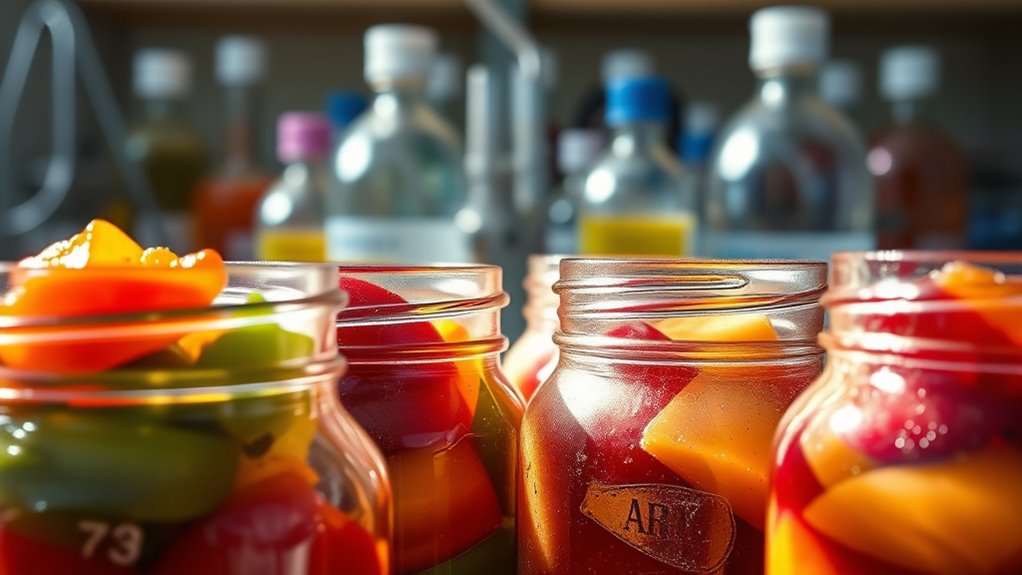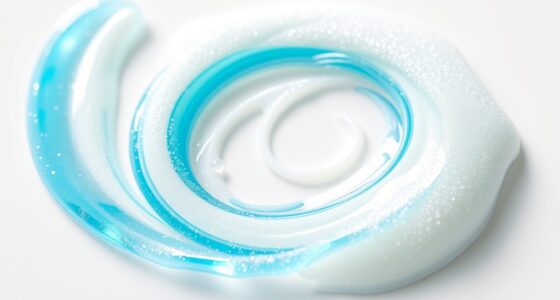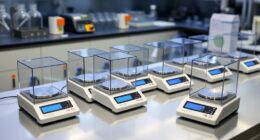Chemical preservatives work by disrupting the internal structures and functions of microbes, such as damaging cell membranes, denaturing proteins, and interfering with essential enzymes and DNA synthesis. They also alter the pH to create unfavorable conditions for growth. These actions inhibit mold, yeast, and bacteria, preventing spoilage and extending shelf life. If you want to understand the specific ways these chemicals preserve food, there’s much more to uncover ahead.
Key Takeaways
- Preservatives disrupt microbial cell membranes, causing leakage and inhibiting growth.
- They denature essential proteins and interfere with enzymes, halting microbial metabolism.
- Preservatives alter pH levels, creating unfavorable conditions for microbial proliferation.
- They inhibit nucleic acid synthesis, preventing microbial replication and survival.
- Certain compounds penetrate cell membranes in undissociated form, effectively inhibiting mold and yeast.
How Chemical Preservatives Prevent Microbial Growth

Chemical preservatives prevent microbial growth by targeting critical structures and functions within microbial cells. They disrupt cellular membranes, causing leakage of essential intracellular contents, and denature proteins essential for metabolism and survival. A new sentence with cellular integrity and the rest of the sentence. Some interfere with enzymatic activity by changing pH or binding to active sites, impairing vital biochemical reactions. Others inhibit nucleic acid synthesis through direct binding or metabolic interference, halting genetic replication. Certain preservatives, like benzoates and sorbates, accumulate intracellular protons or anions, disturbing electrochemical gradients and energy production. For example, sodium benzoate works best at low pH, where it remains in an undissociated form that penetrates cell membranes. Potassium sorbate disrupts membrane integrity and energy pathways, effectively inhibiting mold and yeast growth. These mechanisms collectively reduce microbial viability, extending food shelf life and preservation effectiveness, partly by compromising microbial cellular integrity and disrupting microbial metabolic processes. Additionally, understanding heat pump refrigerants helps improve energy efficiency, which can be relevant for food storage facilities that require precise temperature control to prevent spoilage.
The Role of Antioxidants in Protecting Food Quality
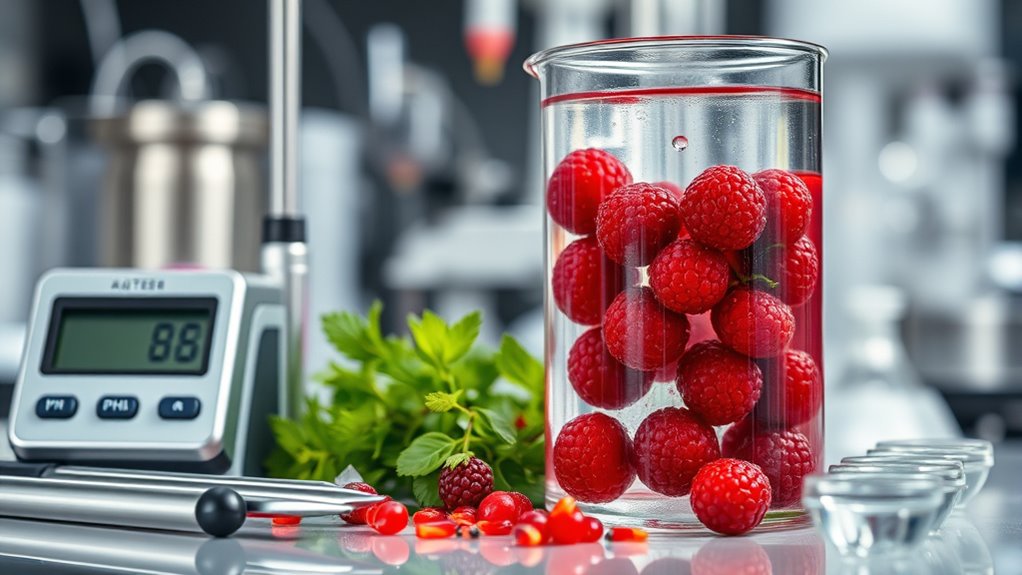
Antioxidants play an essential role in safeguarding food quality by preventing oxidative deterioration that can lead to spoilage. They protect essential nutrients from breaking down during storage and processing, helping your food stay nutritious longer. Mindfulness techniques, such as deep breathing and visualization, can also promote a more attentive approach to food preservation and handling, ensuring better quality control. By neutralizing free radicals, antioxidants act as shields, stopping chain reactions that cause rancidity, discoloration, and texture loss. They also extend shelf-life, reducing waste and keeping products fresh for longer periods. Moreover, antioxidants preserve sensory qualities like taste, color, and texture, maintaining food’s appeal. Natural antioxidants such as vitamins C and E, along with synthetic options like BHA and BHT, are commonly used. Their stability and low volatility ensure they remain effective throughout processing, making them indispensable in maintaining food quality and safety. Additionally, understanding the oxidative processes involved in food spoilage can help in selecting appropriate antioxidants for different types of foods and storage conditions. Recognizing the market demand for natural additives can guide manufacturers toward more sustainable and consumer-preferred options. Incorporating antioxidant stability considerations ensures effectiveness during various processing steps, further supporting food preservation efforts. Understanding the role of packaging materials in protecting antioxidants from environmental factors can further enhance their efficacy.
Ph Adjustment and Its Effect on Food Safety
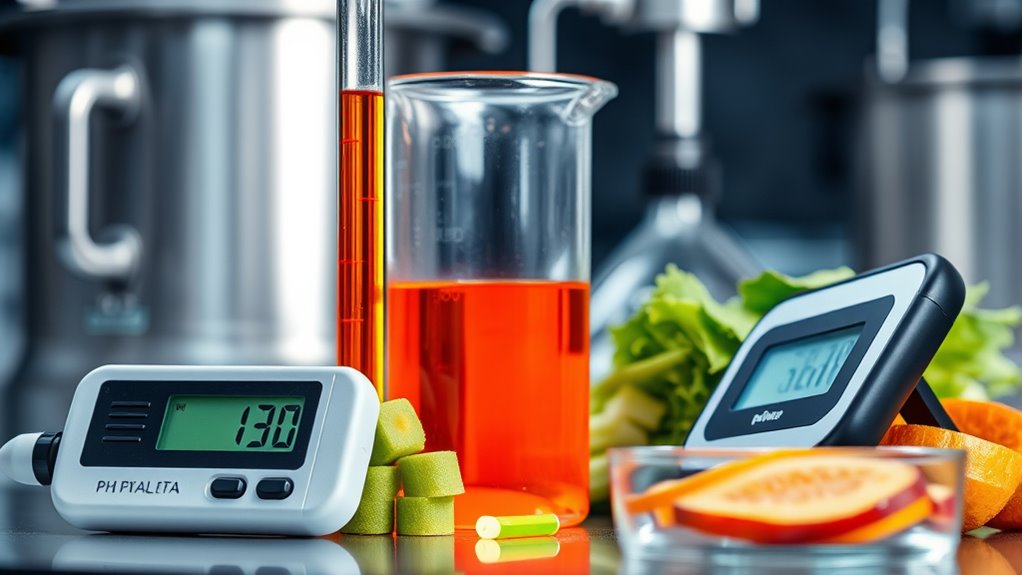
Adjusting the pH level of food directly impacts its safety by controlling microbial growth. Foods with a pH above 4.6 require pressure canning because pathogenic bacteria like *Clostridium botulinum* can thrive. When the pH is at or below 4.6, boiling water baths are sufficient, as most pathogens can’t grow. Natural acidulants such as vinegar or lemon juice, and chemical acids like citric or lactic acid, lower pH effectively. Proper pH control is essential; inaccurate measurements or ingredient variability can lead to unsafe products. Acidification not only inhibits microbial growth but also reduces thermal processing needs, saving energy and preserving quality. In addition, pH measurement accuracy is critical for ensuring food safety, as even small deviations can compromise the preservation process. Accurate testing methods are vital to confirm that the pH remains within safe limits throughout processing. Ensuring proper calibration of pH meters and adherence to standardized procedures further enhances food safety protocols. However, improper pH adjustments can pose risks like botulism, emphasizing the importance of strict regulation and accurate testing in food safety practices. The safety of food preservation techniques also significantly depends on the WWE Raw’s financial impact, which underscores the importance of industry standards and investments in safety measures. Maintaining consistent pH levels is crucial, and accurate testing ensures that the food remains within safe parameters throughout the process.
Disruption of Microbial Metabolism and Cell Integrity

Disruption of microbial metabolism and cell integrity is a key strategy in food preservation, leveraging the natural processes of microorganisms to inhibit spoilage and pathogen growth. Microbial metabolites, like those produced by lactic acid bacteria, can slow down or stop microbial activity without promoting resistance. These compounds interfere with key metabolic pathways and alter cell membrane composition, causing ionic disruption and oxidative stress. Additionally, research supports the use of these natural compounds for predicting microbial behavior and enhancing food safety personality traits, ensuring safer and longer-lasting food products. Bacteriocins and antimicrobial peptides target cell membranes directly, compromising their stability. Furthermore, microbial metabolites can change pH levels and compete for nutrients, disrupting microbial functions, further hindering microbial growth. The ability of these compounds to modulate microbial metabolism plays a vital role in controlling spoilage organisms. This disruption prevents bacteria and fungi from thriving, effectively reducing spoilage. As a result, food remains safe longer, extending shelf life and supporting food security without relying solely on synthetic preservatives. Additionally, understanding these mechanisms aids in developing natural preservation methods, which often benefit from insights into microbial communication like quorum sensing, making preservation strategies more effective and sustainable.
The Impact of Preservatives on Food Shelf Life and Safety
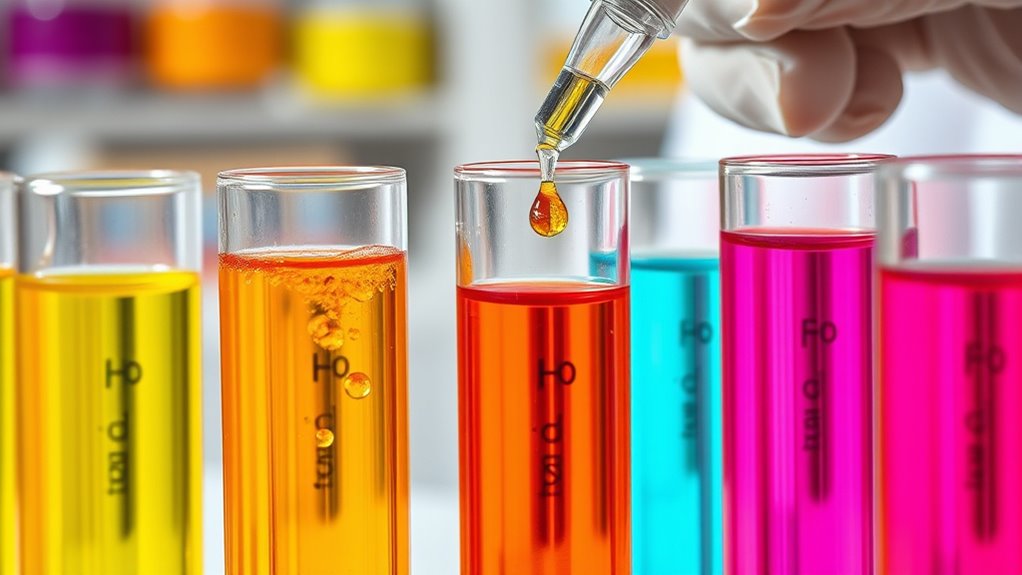
Preservatives play an essential role in extending the shelf life and enhancing the safety of food products. They inhibit microbial growth, reducing spoilage and allowing foods to last longer during storage and transport. Chemical preservatives like sulfur dioxide and sorbates help maintain food’s nutritional and sensory qualities by preventing degradation. They also support efficient logistics, minimizing food waste and economic losses. When it comes to safety, preservatives such as benzoic acid and parabens control bacteria and fungi, lowering the risk of foodborne illnesses. They help ensure consistent quality and meet regulatory standards, boosting consumer confidence. Additionally, the development of best airless paint sprayers has revolutionized food packaging and processing equipment, contributing to more hygienic and efficient handling. Implementing proper preservative types is crucial for achieving optimal preservation effects while ensuring safety. While many preservatives are effective, growing consumer demand favors natural options, and ongoing research aims to identify safer, eco-friendly alternatives that preserve food efficiently without compromising health. Moreover, advances in preservative technology continue to enhance food safety protocols and extend shelf life further, especially with the integration of eco-conscious materials like natural preservatives.
Frequently Asked Questions
Are Chemical Preservatives Harmful to Human Health?
You wonder if chemical preservatives are harmful to your health. While regulatory agencies approve many of them within safe limits, concerns remain.
Some preservatives, like BHA, BHT, and tBHQ, have links to cancer, brain damage, or allergic reactions.
Excessive consumption can disrupt your gut microbiome, cause metabolic issues, or trigger sensitivities.
It’s wise to read labels, limit processed foods, and consider natural alternatives for better long-term health.
How Do Preservatives Affect the Taste and Texture of Food?
You might notice preservatives change food’s taste and texture. They prevent spoilage, so flavors stay fresh longer, and textures remain consistent.
Some preservatives add sourness or enhance umami, affecting flavor perception. Others help maintain moisture or prevent clumping, keeping textures appealing.
Can Natural Preservatives Replace Chemical Ones Effectively?
You wonder if natural preservatives can replace chemical ones effectively. While natural options like salt, vinegar, and plant extracts work, they often have limitations. They may require higher amounts, affect taste or texture, and mightn’t cover all microbes.
Synthetic preservatives are more reliable and precise, especially for long shelf life. So, natural preservatives can be effective in certain cases but mightn’t fully replace chemical ones across all food products.
What Are the Environmental Impacts of Using Chemical Preservatives?
Think of chemical preservatives as silent invaders quietly altering our environment’s delicate balance. They resist breakdown, accumulate in soil and water, and disrupt ecosystems.
You mightn’t see the damage, but these chemicals bioaccumulate, harm aquatic life, and reduce biodiversity.
When you choose products with chemical preservatives, you’re indirectly contributing to soil acidification, water contamination, and potential health risks from exposure.
Your choices ripple through the environment, shaping its future.
How Are Preservatives Regulated in Different Countries?
You’ll find that food preservatives are regulated differently around the world. In the US, the FDA allows self-affirmed GRAS status, while the EU requires thorough safety assessments before approval.
Countries like Australia and Japan demand pre-approval, and some, like the EU, ban certain substances such as titanium dioxide. You should always check local regulations because standards and banned substances vary markedly, affecting food safety and import/export rules.
Conclusion
Understanding the chemical reasons behind food preservation reveals how you can keep your food safe and fresh longer. These preservatives act like silent guardians, blocking microbes and maintaining quality. Think of them as the shield that battles decay, ensuring every bite remains wholesome. By knowing these chemical secrets, you empower yourself to make smarter choices and enjoy food that’s both safe and delicious—because behind every preserved meal, there’s a clever chemical story waiting to be uncovered.
